Story
Tackling nitrogen pollution in South Asia, project update from the Maldives
10 February 2024
![Above: The Republic of Maldives consists of 1,192 tiny islands in 26 atolls spread from north to south. With the islands surrounded by the ocean, the greatest diversity occurs in marine and coastal environments. [Source]](/getattachment/47ed6c62-1216-426a-8cd2-775f01adc02e/website-10-.jpg) Above: The Republic of Maldives consists of 1,192 tiny islands in 26 atolls spread from north to south. With the islands surrounded by the ocean, the greatest diversity occurs in marine and coastal environments. [Source]
Above: The Republic of Maldives consists of 1,192 tiny islands in 26 atolls spread from north to south. With the islands surrounded by the ocean, the greatest diversity occurs in marine and coastal environments. [Source] Humans have hugely altered the flows of nitrogen on the planet - leading to benefits for food production, while simultaneously creating multiple threats to the environment. There are few places on Earth more affected than South Asia, with levels of nitrogen pollution rapidly increasing.
The South Asian Nitrogen Hub (SANH) project aims to tackle the nitrogen challenge by bringing together experts from over 32 leading research organisations from the UK and eight South Asian countries - India, Pakistan, Bangladesh, Nepal, Afghanistan, Sri Lanka, Bhutan and Maldives - dedicated to international co-operation for a healthier planet.
The Hub includes research on how to improve nitrogen management in agriculture and sewage, and investigates how nitrogen is impacting our ecosystems. SANH is also working with South Asian governments to further develop the policy conversation on nitrogen management in the region.
The five-year project has been backed by a multidisciplinary team of scientists from PML, tying together different areas of expertise. Dr Yuri Artioli (project lead), Dr Al Azhar and Dr Molly James work on the ecosystem modelling side – to investigate and predict future nitrogen scenarios in South Asia. Included in their work is a computer model of the Maldives island of Thoddoo, an agriculture intensive island.
-(1).png)
Above: Beach on the Maldives island of Thoddoo
Dr Yuri Artioli and Dr Al Azhar said:
“The inhabited small-island of Thoddoo has been experiencing growing pressure of nitrogen pollution from tourism and agriculture in recent years. Waste management on the island has been challenging and a piping system to pump wastewater containing excess nitrogen to the ocean is being built. We use an ultra-high-resolution ocean model to predict possible transport pathways and the impact of nitrogen pollution around the island, especially to estimate the possible pollutant dispersions to the lagoon and coral reef areas under present day and future scenarios.”
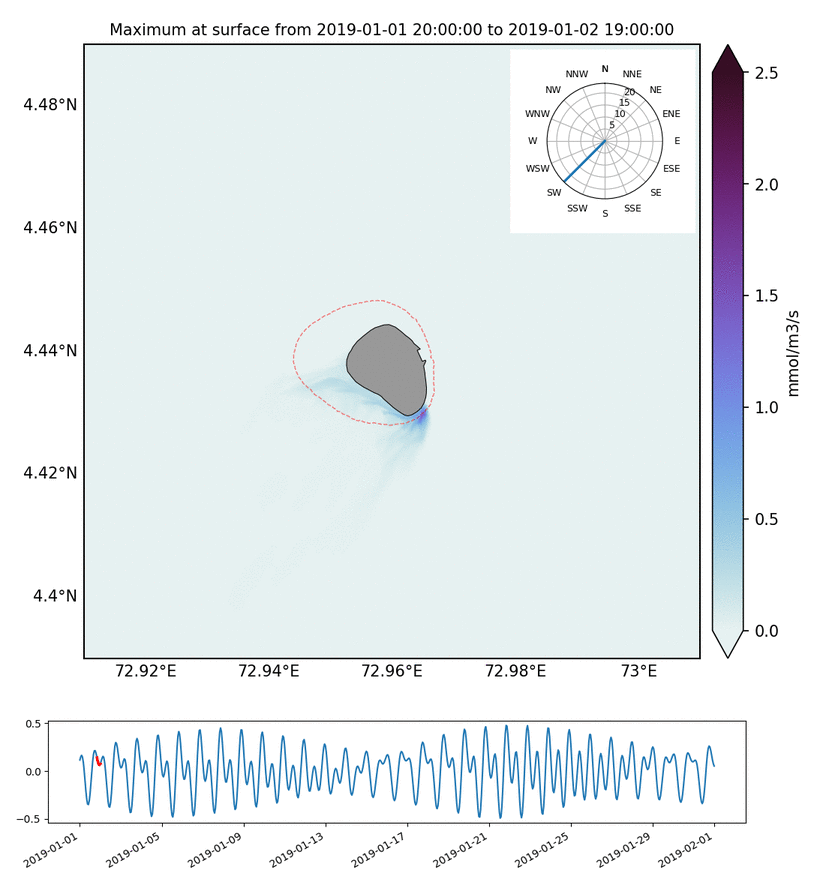
Above: A model output of Thoddoo island run by Dr Al Azhar, showing dispersion of modelled nitrogen pollution from the outlet of wastewater system to the oceanic areas around the island during North-East monsoon.
“These modelling approaches can also be useful to support the design of wastewater management plan and policy in order to minimise the negative impacts of nitrogen pollution in Thoddoo.”
-(2).png)
Above: Marine biodiversity around the Maldives islands. The Maldives has rich marine biodiversity, with a total of 1,100 species of demersal and epipelagic fish, including sharks, 5 types of marine turtles, 21 species of whales and dolphins, 180 species of corals and 400 species of mollusks. There are 120 species of copepods, 15 species of amphipods, over 145 species of crabs and 48 species of shrimps. There are also 13 species of mangroves and 583 species of vascular plants. [Source]
The pristine marine ecosystems of the Maldives are being threatened by factors such as climate change and coral bleaching. They are also threatened by anthropogenic activity such as tourism and over-exploitation without consideration given to biodiversity. Pollution from uncontrolled waste disposal, untreated sewage and land reclamation and channel building are major threats to the biodiversity. However, turtle and shark fishing have been banned, as has coral mining. Threats or pressures on terrestrial biodiversity include damage due to unsustainable agricultural practices, such as overuse of chemical fertilizers and pesticides, removal of vegetation for infrastructure and human settlement, and developmental practices. [Source]
And, also working on the SANH project from our Sea and Society team, Dr Olivia Rendón has recently returned from fieldwork in the Maldives, which involved developing focus groups on three islands - urban, touristic and agricultural - to explore people’s relationship to the sea, and their preferences for managing marine pollution. Each focus group includes a questionnaire, participatory mapping, scenario selection and group discussion.
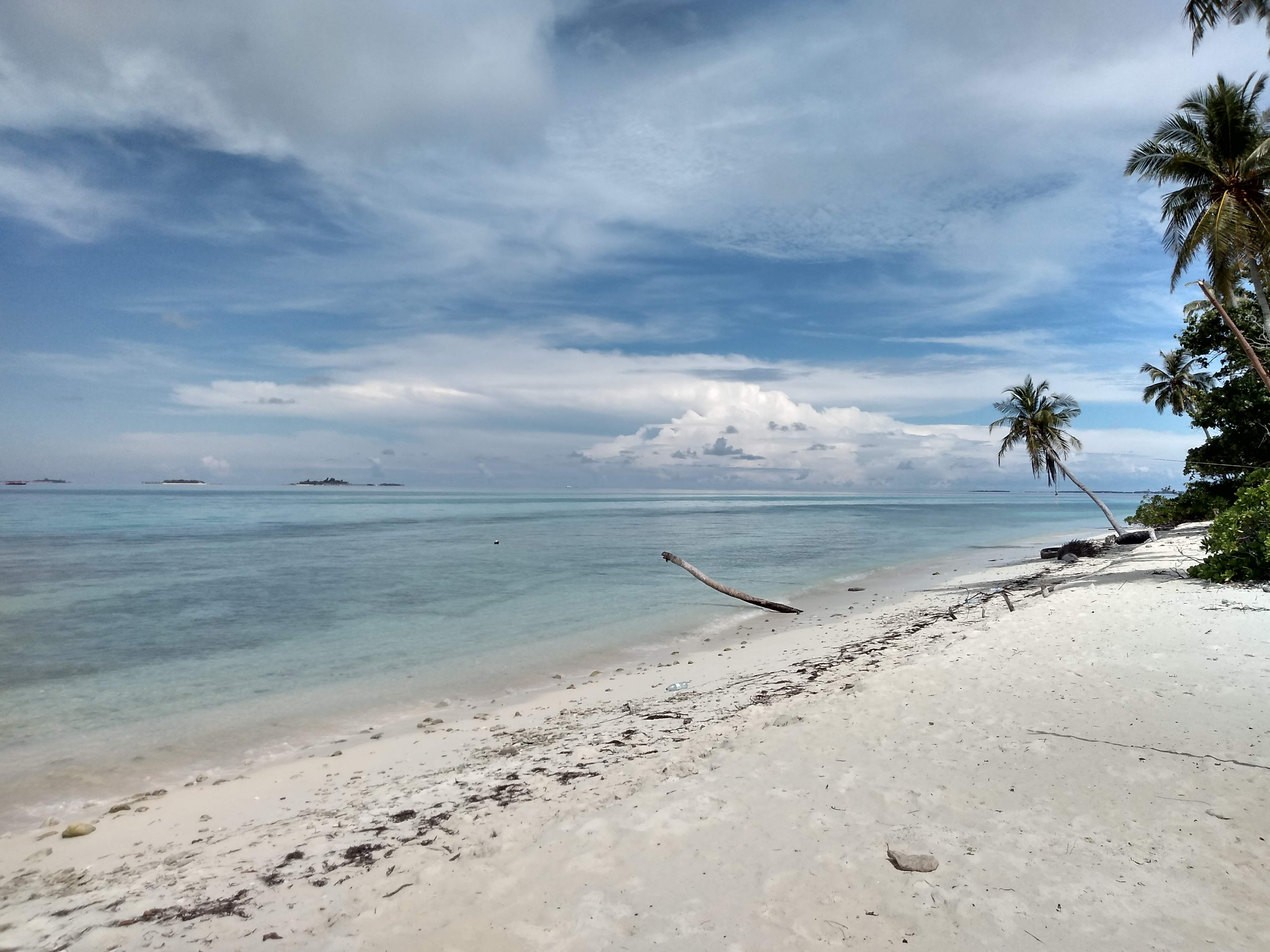
Above: A beach in the Maldives, taken by Dr Olivia Rendón during a scoping trip to the islands.
She said:
“We want to understand locals' knowledge of nitrogen pollution arising from sewage and agriculture, and its impact on coral reefs and the wider marine environment.”
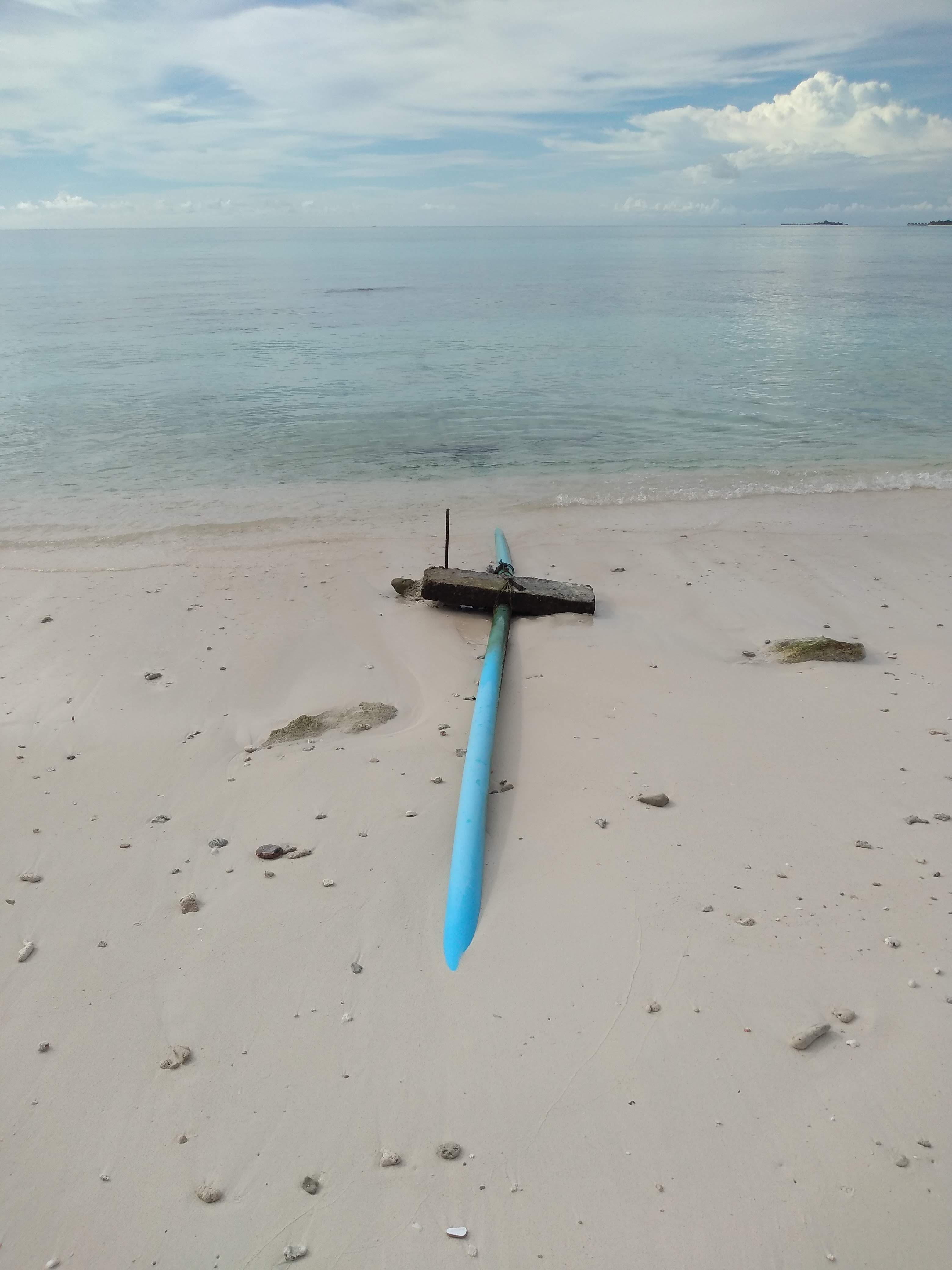
Above: A photo from Dr Olivia Rendón during a scoping trip to the islands, showing sewage pipes going out into the sea.
“Scenarios trading-off tourism growth and marine conservation were discussed with locals. We found an awareness of the poor condition of coral reefs around inhabited islands but also a strong support for fast growing tourism. The outputs will be used for academic purposes and to provide information to local island councils and the government, to inform decisions on sewage management to protect the marine ecosystems around their islands.”
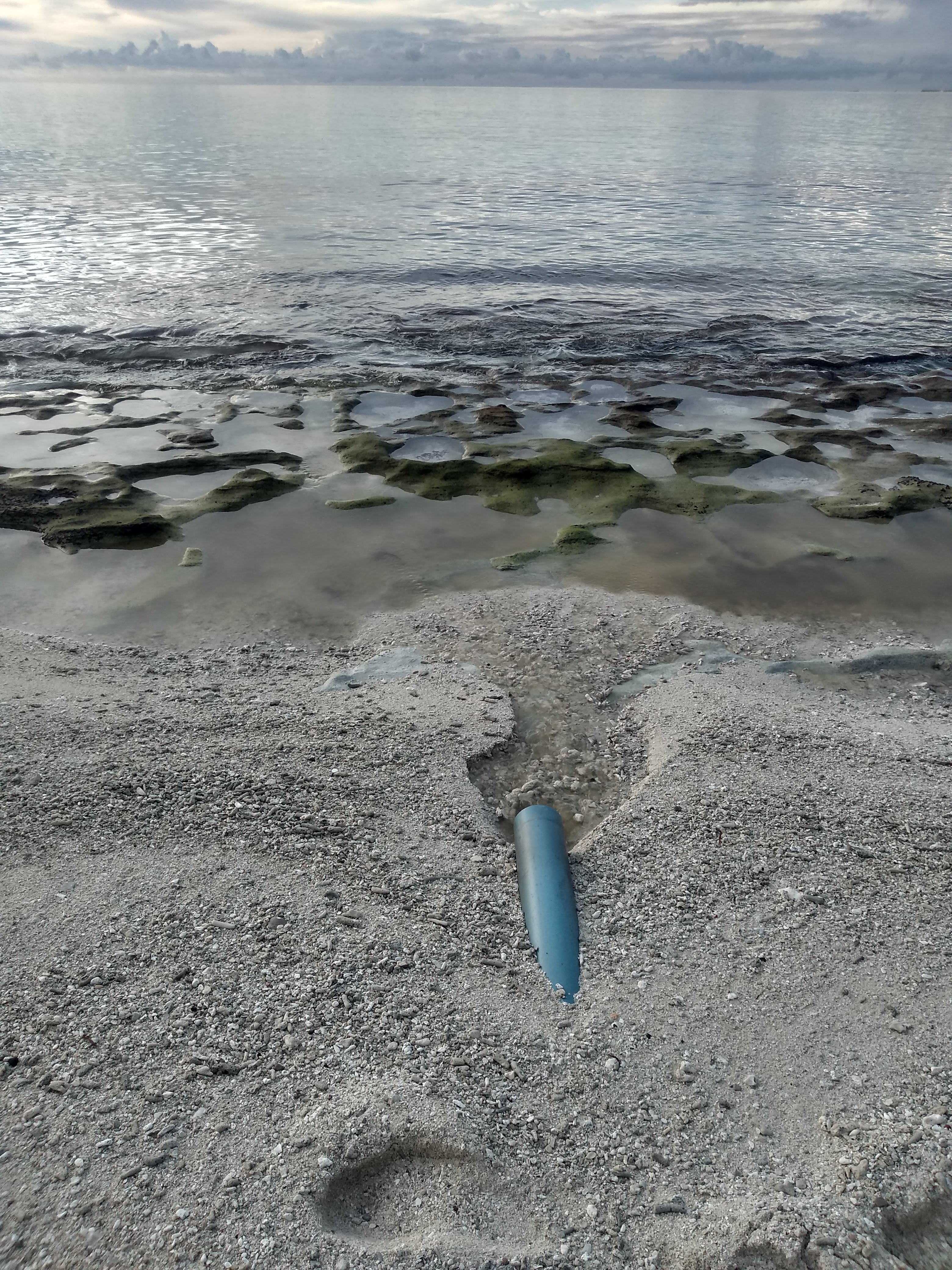 Above: A photo from Dr Olivia Rendón showing algae overgrowth and dead coral – both symptoms of excess nitrogen – around a broken sewage pipe.
Above: A photo from Dr Olivia Rendón showing algae overgrowth and dead coral – both symptoms of excess nitrogen – around a broken sewage pipe.
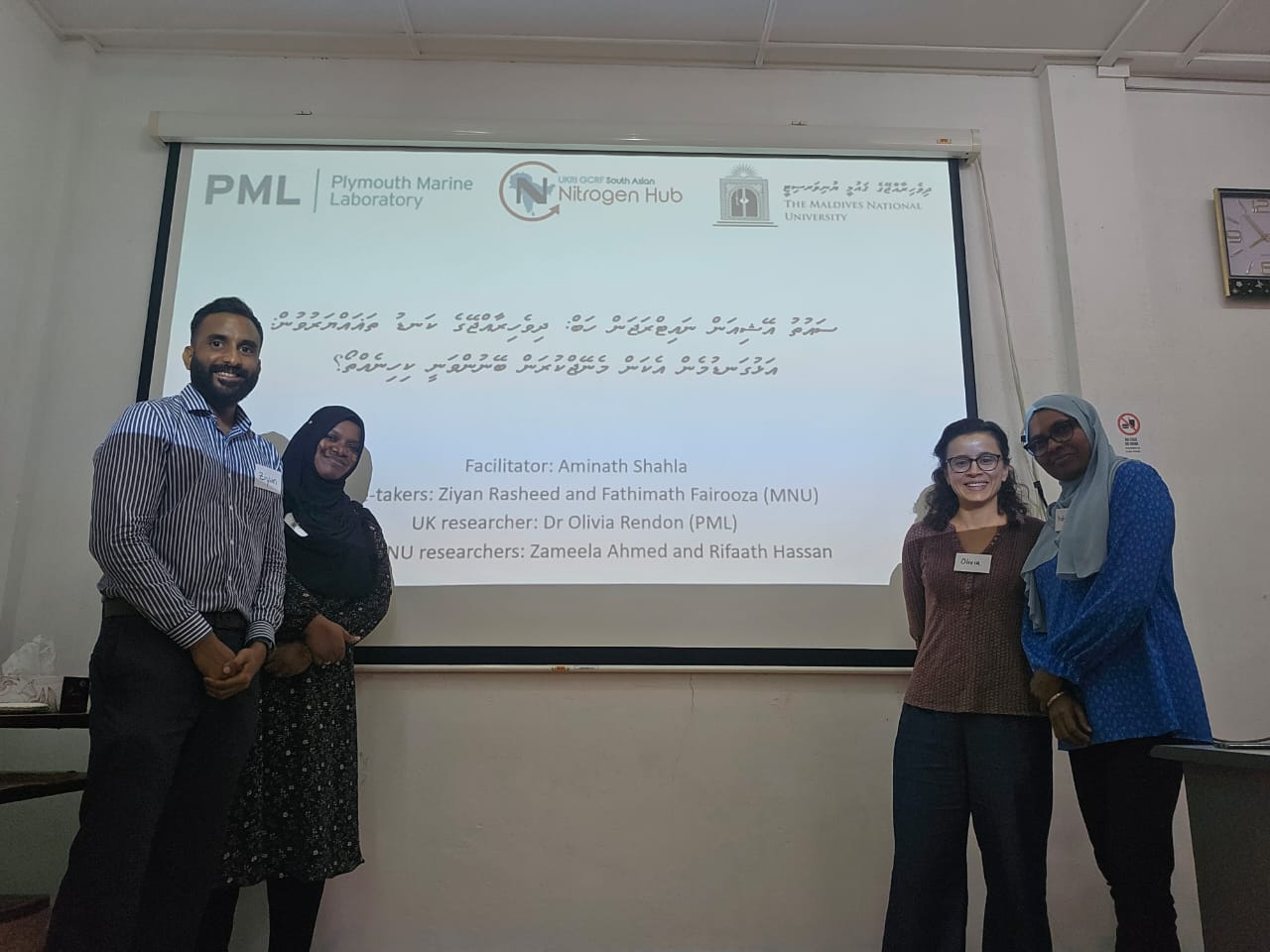
Above: from the left Ziyan, Fairooza, Olivia and Shahula about to start a focus group.
Below: Participatory mapping workshop underway with local stakeholders, to support the protection of marine ecosystems.
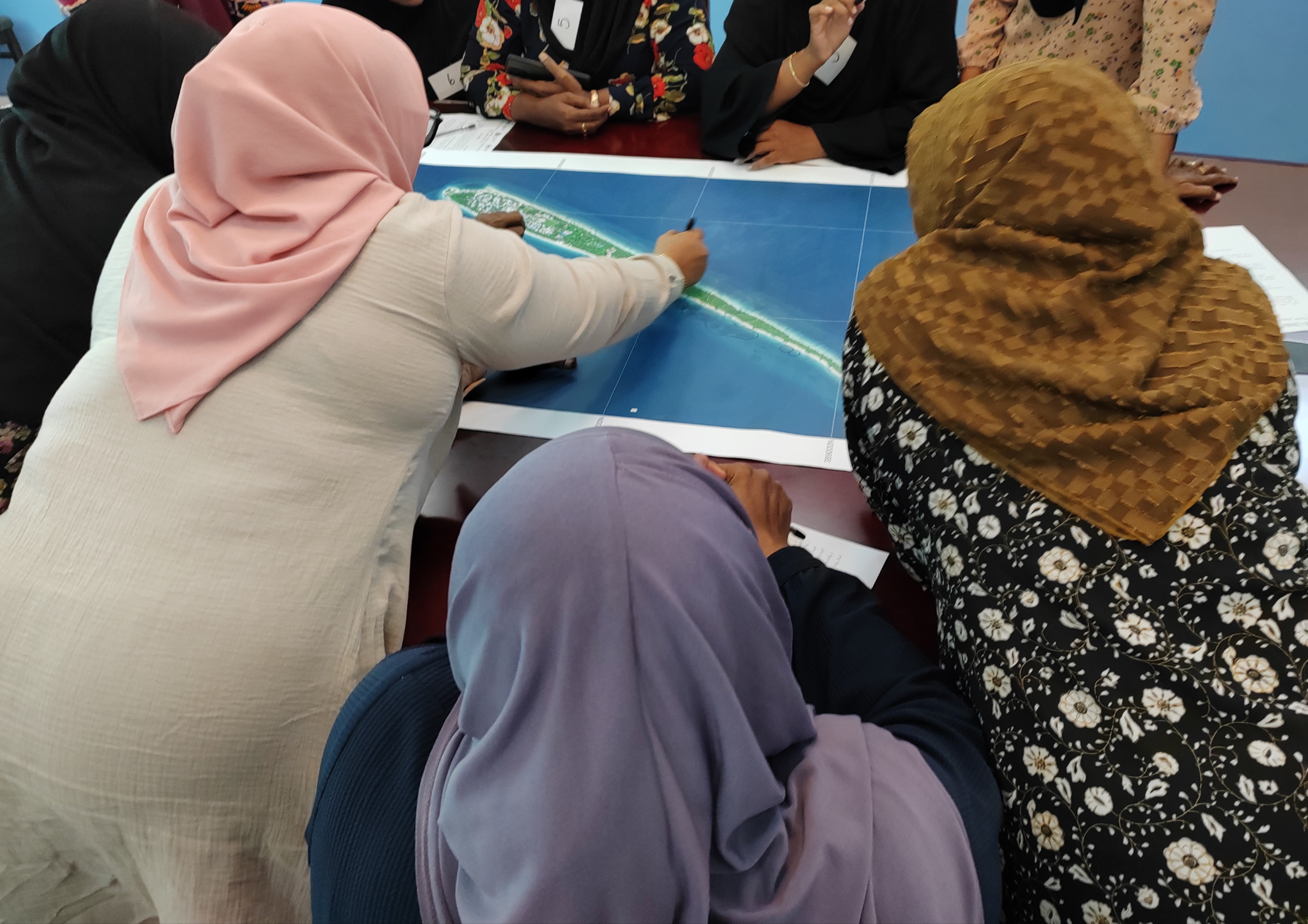
We will be sharing updates on this project on our website and social media channels, please stay tuned!
Related information
Funded by UKRI GCRF, the South Asian Nitrogen Hub is a pioneering UK-South Asia research partnership to enable South Asia to adopt and champion a strategic approach to nitrogen management, as a key step towards the Sustainable Development Goals.
UKRI GCRF South Asian Nitrogen (SANH) website >>
Free online courses on the global nitrogen issue here>>